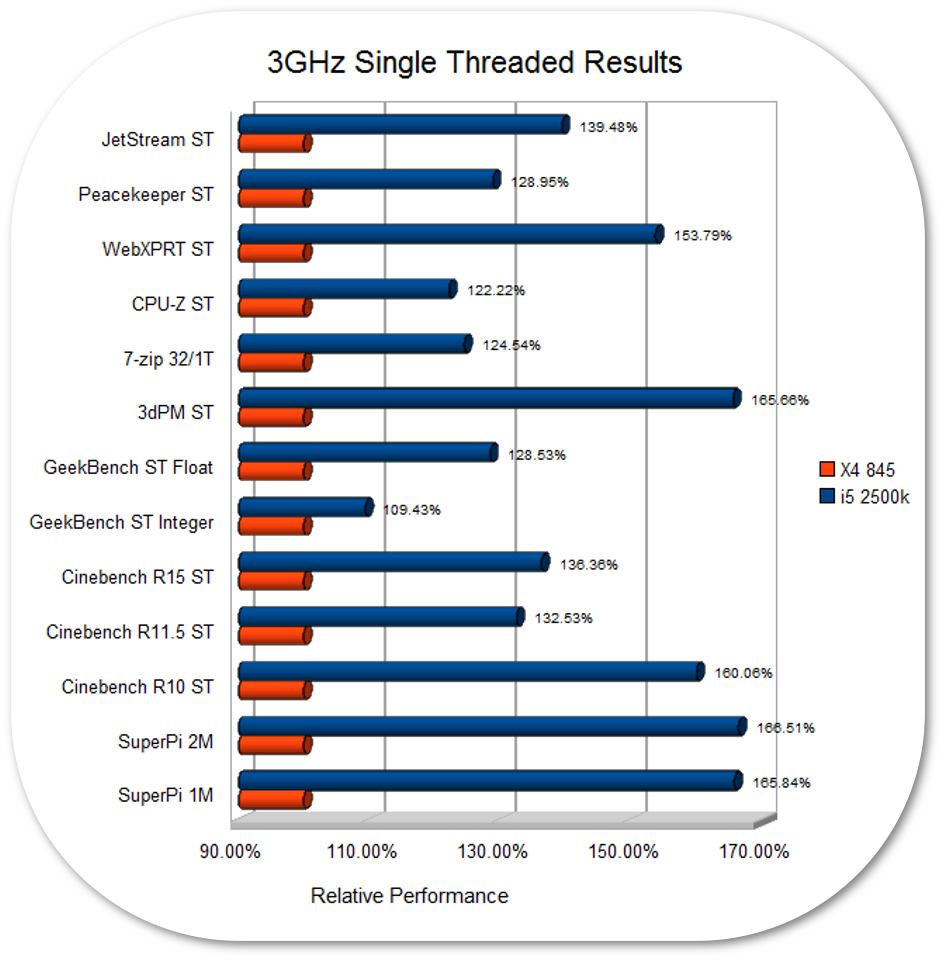Made few more Excavator vs. Haswell tests.
The performance difference in X264 (which supposed to be one of the few favorable workloads for 15h) was surprisingly large in favor of Haswell.
X264 0.148.x (20/4/2016)
Compiled: GCC 5.3 x86-64 + YASM 1.30
Settings: Slow, ME = UMH, RC = CRF 16.0, Threads = 1
Input: YUV 420P, 1920x1080, 30fps
Carrizo = 1.82fps
Haswell = 2.71fps (+48.9%)
VP9 1.5.x (Master), 3/5/2016
Compiled: GCC 5.3 x86-64 + YASM 1.30
Settings: Good, Webm, CPU-Used = 3
*, End-Usage=CQ, CQ-Level=12, Target-Bitrate=9000, Threads = 1
Input: YUV 420P, 1920x1080, 30fps
* A quality control parameter, has nothing to do with the number of utilized threads or cores. Range 0-8, smaller settings are slower but produce better quality and compression.
Carrizo = 1.03fps
Haswell = 1.64fps (+59.2%)
"Prime"
Uses GMP 6.1 library to calculate Mersenne Prime numbers.
GMP was compiled as a "fat" binary, meaning it will use all available / supported instructions on all CPUs (effectively a CPU RTD).
Compiled: GCC 5.3 x86-64, generic binary (no architecture specific optimizations).
Carrizo = 327.366 seconds
Haswell = 192.817 seconds (+69.8%)
















